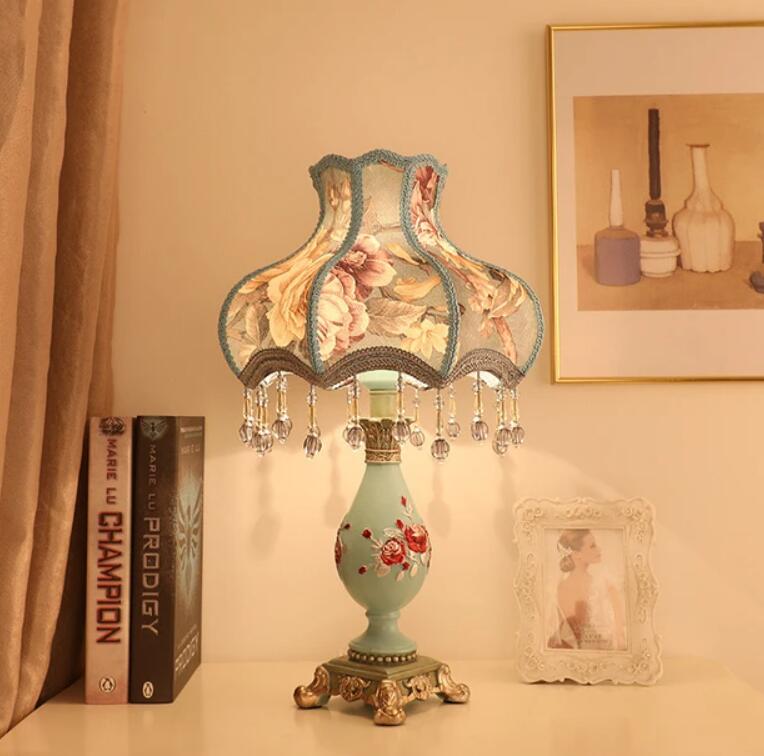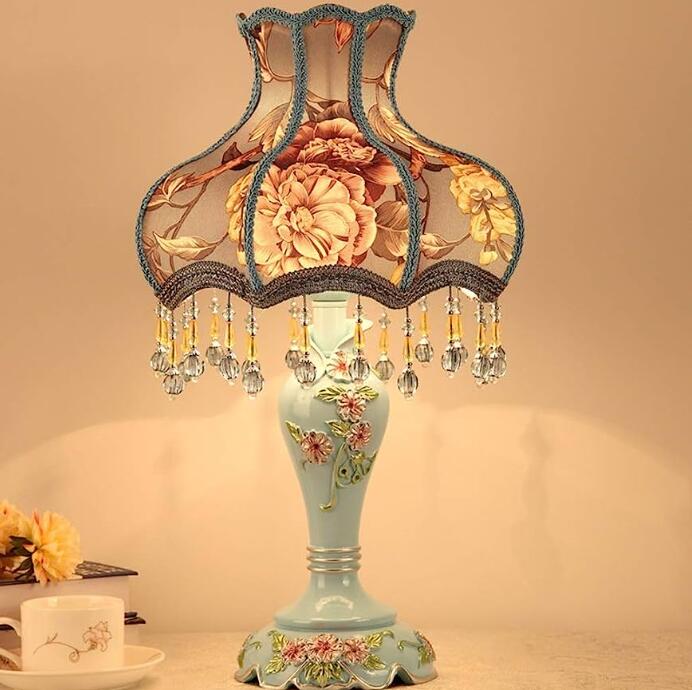The Art Nouveau design movement emerged in the late 19th century as a reaction against the rigid and ornate styles of the Victorian era. Characterized by its emphasis on organic shapes, flowing lines, and its incorporation of natural forms and motifs, Art Nouveau would go on to influence a wide range of decorative art forms, including lamps.
Art Nouveau lamps are known for their unique style, which combines functionality with aesthetics, and often incorporates intricate designs and patterns inspired by nature.
In this article, we’ll take a closer look at the organic style of Art Nouveau lamps, exploring what inspired it, how it was achieved, and what makes it unique. Whether you’re a collector, a designer, or just someone who appreciates the beauty of finely crafted lamps, we hope this article will help you gain a deeper understanding of Art Nouveau lamp design and its enduring appeal.
What inspired the organic style of Art Nouveau lamps?
The organic style of Art Nouveau lamps was a reaction against the rigid and geometric forms prevalent in Victorian era design. Art Nouveau designers sought to create a more natural and fluid style that embraced the freedom and movement found in the natural world.
Inspired by the aesthetics of nature, Art Nouveau lamp designers incorporated natural forms, such as plants, flowers, and vines, into their designs. They embraced the flowing curves and asymmetrical shapes found in these natural elements to create unique lamp designs that were both functional and beautiful.
One of the defining features of the organic style in Art Nouveau lamps was the use of flowing lines and dynamic curves. This can be seen in the elaborate and intricate designs of Tiffany lamps, which feature organic motifs like dragonflies and flowers rendered in stained glass. Other Art Nouveau lamps feature twisted wrought iron bases topped with decorative shades that incorporate swirling vines and leaves.
The organic style of Art Nouveau lamp design was an innovative departure from earlier styles, drawing inspiration from nature and combining it with functionality in a way that hadn’t been seen before. This unique approach to lamp design would have a lasting impact on the decorative arts and continues to inspire designers and collectors today.
How were natural forms and materials incorporated into the design of Art Nouveau lamps?
Art Nouveau lamp designers incorporated natural forms and motifs into their designs, using materials like glass, stained glass, bronze, and wrought iron.
In some cases, the glass used in Art Nouveau lamps takes on an organic form, with glass shades designed to resemble flowers or natural shapes. Examples include the “Lily” lamp by the American designer Tiffany, which features a bronze base that holds a glass shade modeled after a water lily. The “Poppy” lamp by Emile Galle is another example, featuring a glass shade with a poppy flower design.
Bronze and wrought iron were often used to create the base of Art Nouveau lamps, with the metal sculpted into forms that resembled vines, branches, or other natural forms. The French designer Eugene Gaillard, for example, created a lamp base in the shape of a dragonfly, while the British designer W.A.S. Benson created lamps with bases that resembled twisting stems or branches.
One of the most distinctive features of Art Nouveau lamp design is the use of repetitive plant and floral motifs. This can be seen in the “Blue Peacock” lamp by Louis Comfort Tiffany, which features a shade with a peacock feather motif, or in the “Wild Grapes” lamp by Clara Wolcott Driscoll, which features a shade with a grapevine design. The use of recurring patterns and motifs creates a cohesive and unified design that is organic and natural.
Color choices were also an important aspect of Art Nouveau lamp design, with natural earthy tones like greens, browns, and golds predominating. Bright accent colors like blues, purples, and pinks were also used to add a splash of color and vibrancy to the overall design.
What types of natural motifs are commonly found in Art Nouveau lamp designs?
Art Nouveau lamp designers drew upon a wide range of natural motifs to create their unique designs. Some of the most common natural motifs used in Art Nouveau lamps include:
Lilies
The lily was a popular motif in Art Nouveau lamp design, with designers like Tiffany creating lamps that featured bronze bases in the shape of lily pads and glass shades that resembled water lilies. The tapering, elongated shape of the lily was particularly well-suited to the flowing lines and natural curves of Art Nouveau design.
Poppies
The poppy was another popular motif, with Art Nouveau designers incorporating its distinctive shape and vibrant colors into their lamp designs. The “Poppy” lamp by Emile Galle, for example, features a glass shade with a bold red poppy flower design that stands out against a muted green background.
Dragonflies
The dragonfly was a favorite motif of many Art Nouveau designers, its long, graceful form perfectly suited to the flowing curves and delicate lines of the style. The French designer Eugene Gaillard created several lamps with dragonfly motifs, including one that features a bronze base with a dragonfly perched on a lily pad.
Peacock Feathers
Peacock feathers were a common motif in Art Nouveau lamp design, their distinctive shape and iridescent colors lending a touch of exoticism to the overall design. The “Blue Peacock” lamp by Louis Comfort Tiffany is a prime example, featuring a shade with a striking peacock feather design rendered in shades of blue and green.
Overall, the use of natural motifs in Art Nouveau lamp design helped to create a sense of organic unity and harmony, with the lamp blending seamlessly into its surroundings and adding a touch of natural beauty to any space.
Conclusion
Art Nouveau lamps are unique in their organic and fluid style, which sets them apart from other lamp designs of their time. The use of natural forms and motifs, along with flowing lines and asymmetrical shapes, created a sense of movement and freedom that was in stark contrast to the rigid and ornate styles of the Victorian era.
Art Nouveau lamps represent an exciting and unique style that marries form and function, beauty and practicality. Their intricate designs, natural motifs, and fluid lines continue to inspire designers and collectors around the world, making Art Nouveau lamps an enduring example of the power of artful design.


